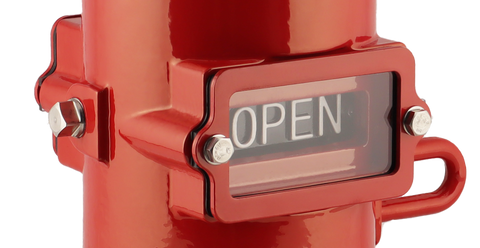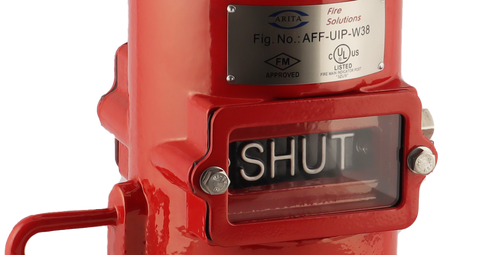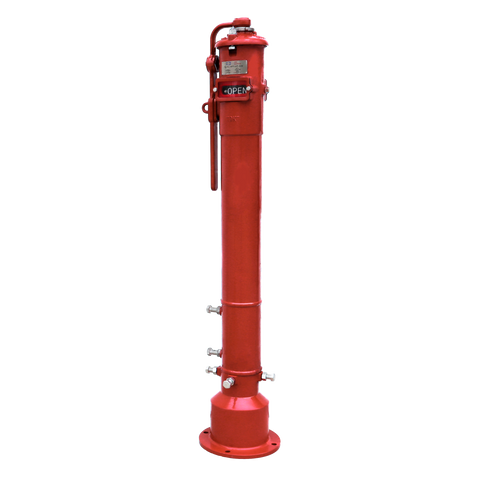2 comments
Indicator Post: What is it? When do you need one?
Indicator post, also known as post indicator valve (PIV), post indicator, controls the flow of water and is an important type of valve in fire protection systems. It is commonly used as the valve operator for automatic sprinklers and hydrants when the water system main valve is located out of sight, whether the main valve is underground outside the building or within walls inside the building.
Featuring Components of an Indicator Post
The two most important features of an indicator post are 1) an indicator window to visually access the “OPEN” or “SHUT” position of the system valve and 2) a valve actuator to quickly open or shut the valve. These two main features make the indicator posts ideal for fire suppression systems or simply for valves used frequently.


The window on the post head indicates the position of the valve. The straightforward display is very helpful for a quick response to an emergency. In cases of fires, the exterior walls of a building might collapse and risk cutting off water supply for firefighting efforts. With a glance, fire fighters can locate the water main valve easily and control the flow and pressure of water supply as needed.
The valve actuator is in the form of either a handwheel or a handle depending on the type of indicator posts, and it controls the gate or butterfly valve at its base which is connected to the system main valve. The valve actuators are commonly lockable and secured with chains and padlocks or with tamper switches.
Types of Indicator Posts
Wall Indicator Post (WPIV). This kind of post is mounted horizontally to the exterior of a building, perpendicular to the walls. It is operated with a lockable handwheel equipped to the top of the post.
Shop ARITA UL/FM Fire Protection Wall Indicator Post for NRS Gate Valve 2”-12” as shown in Figure 1.

Underground Indicator Post. This indicator post is best for when the system main valve is located underground. The post protrudes above ground while its base is buried in the ground. It is operated with a lockable handle as the valve actuator.
Shop ARITA UL/FM Fire Protection Underground Indicator Post for NRS Gate Valve 2”-24”.

When Do You Need an Indicator Post?
National Fire Protection Association (NFPA) provides requirements in NFPA 14: Standard for the Installation of Standpipe and Hose Systems, which stated that each water supply (except for an FDC) shall be provided with a listed indicating valve in an approved location. In addition, annex A in NFPA 14 listed an order of preference for outside control valves:
- Listed indication valves at each connection into the building at least 40 feet (12.2 m) from the building where space permits.
- Control valves in a cutoff stair tower or valve room accessible from the outside.
- Valves located in risers with indicating posts arranged for outside operation.
- Key-operated valves in each connection into the building.
Remember to check for your local or state code amendments and your AHJ for post indicator valve requirements as well.
Maintenance
It is important to maintain the indicator post regularly to maximize its usage in the fire protection system. The indicator post must always be accessible in landscaped areas, such as being free of overgrown bushes and branches. If the indicator post is in the way of car or truck traffic, ensure that the post is protected from damage. The indicator windows are suggested to be cleaned regularly for the words to be visible. Check your local fire departments for suggestions on the inspection intervals.


2 comments
asai — 08:24 AM
thanks
Anonymous 22 — 08:10 PM
nice! thank you for this knowledge